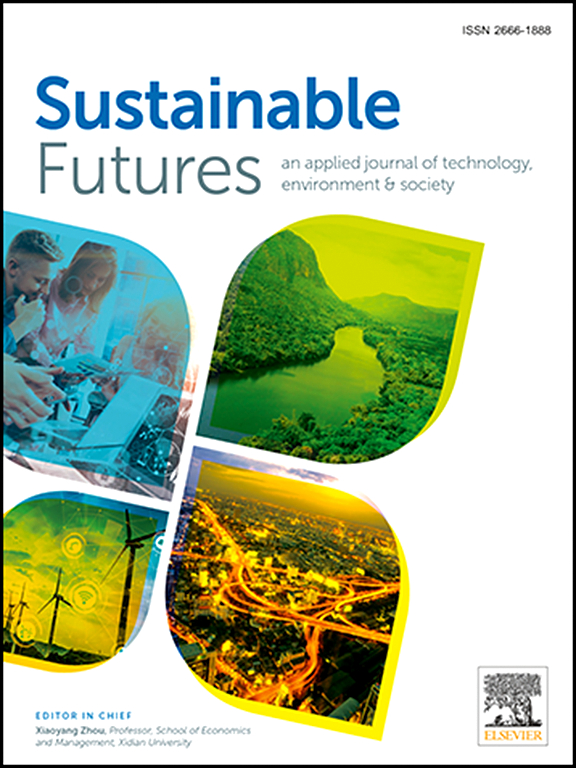Optimization of the agricultural and forestry biomass power generation supply chain considering multi-period inventory
IF 4.9
2区 社会学
Q2 ENVIRONMENTAL SCIENCES
引用次数: 0
Abstract
Biomass fuel supply fluctuates due to seasonal effects, making stocks unstable. In this study, a multi-cycle inventory optimization model of agricultural and forestry biomass power supply chain was constructed based on mixed integer linear programming, considering the cooperative supply of agricultural and forestry biomass and the dynamic change of inventory. Based on case study and sensitivity analysis, the dominant model and inventory size suitable for this supply chain are discussed. The results of case study show that the broker-led model is more suitable for the supply chain of collaborative supply of agricultural and forestry biomass. After optimization, the warehouse area of the power plant is 0.83, and the warehouse area of the five acquisition stations is 4.81 . Compared with the unoptimized state, the operating cost of the supply chain is reduced by 9.77 %, saving about 850,000 per year. Further sensitivity analysis of the factors affecting the inventory cost shows that reducing the footprint of the warehouse and increasing the biomass supply can reduce the cost of the warehouse and improve the economic benefit. This study solves the problem of inventory overstocking caused by seasonal fluctuations of biomass fuel supply and improves supply chain stability.
考虑多期库存的农林生物质发电供应链优化
由于季节性影响,生物质燃料供应波动,使库存不稳定。考虑农林生物质协同供给和库存动态变化,基于混合整数线性规划,构建了农林生物质电力供应链多周期库存优化模型。在案例分析和敏感性分析的基础上,讨论了适合该供应链的优势模型和库存规模。案例研究结果表明,经纪人主导模式更适合于农林生物质协同供应的供应链。优化后,电厂仓库面积为0.83hm2, 5个采集站仓库面积为4.81 hm2。与未优化状态相比,供应链运行成本降低9.77%,每年节约成本约85万元。进一步对影响库存成本因素的敏感性分析表明,减少仓库占地面积和增加生物质供应可以降低仓库成本,提高经济效益。本研究解决了生物质燃料供应季节性波动导致的库存积压问题,提高了供应链的稳定性。
本文章由计算机程序翻译,如有差异,请以英文原文为准。
求助全文
约1分钟内获得全文
求助全文
来源期刊

Sustainable Futures
Social Sciences-Sociology and Political Science
CiteScore
9.30
自引率
1.80%
发文量
34
审稿时长
71 days
期刊介绍:
Sustainable Futures: is a journal focused on the intersection of sustainability, environment and technology from various disciplines in social sciences, and their larger implications for corporation, government, education institutions, regions and society both at present and in the future. It provides an advanced platform for studies related to sustainability and sustainable development in society, economics, environment, and culture. The scope of the journal is broad and encourages interdisciplinary research, as well as welcoming theoretical and practical research from all methodological approaches.
 求助内容:
求助内容: 应助结果提醒方式:
应助结果提醒方式:


